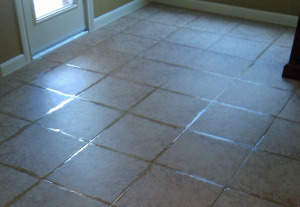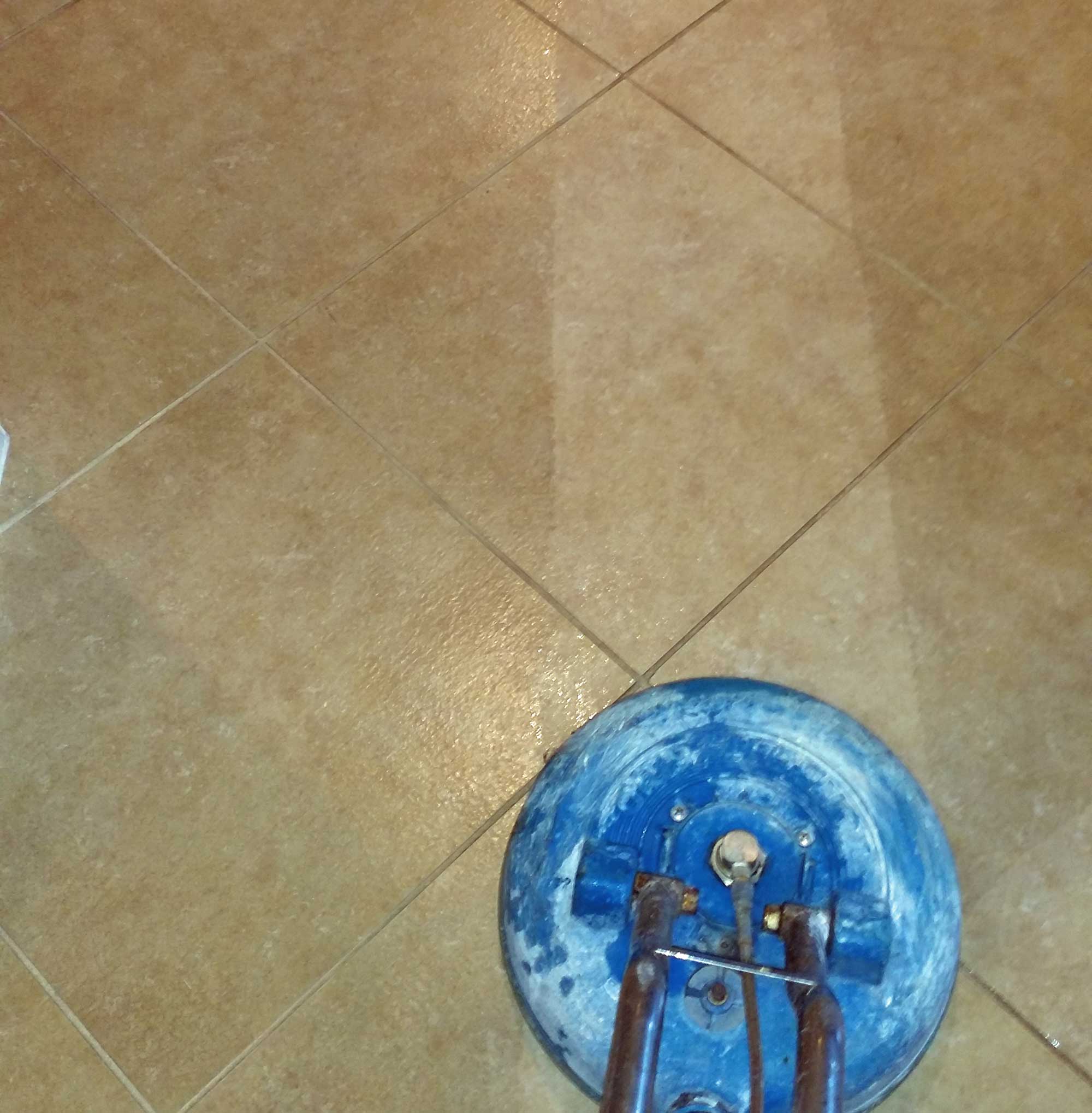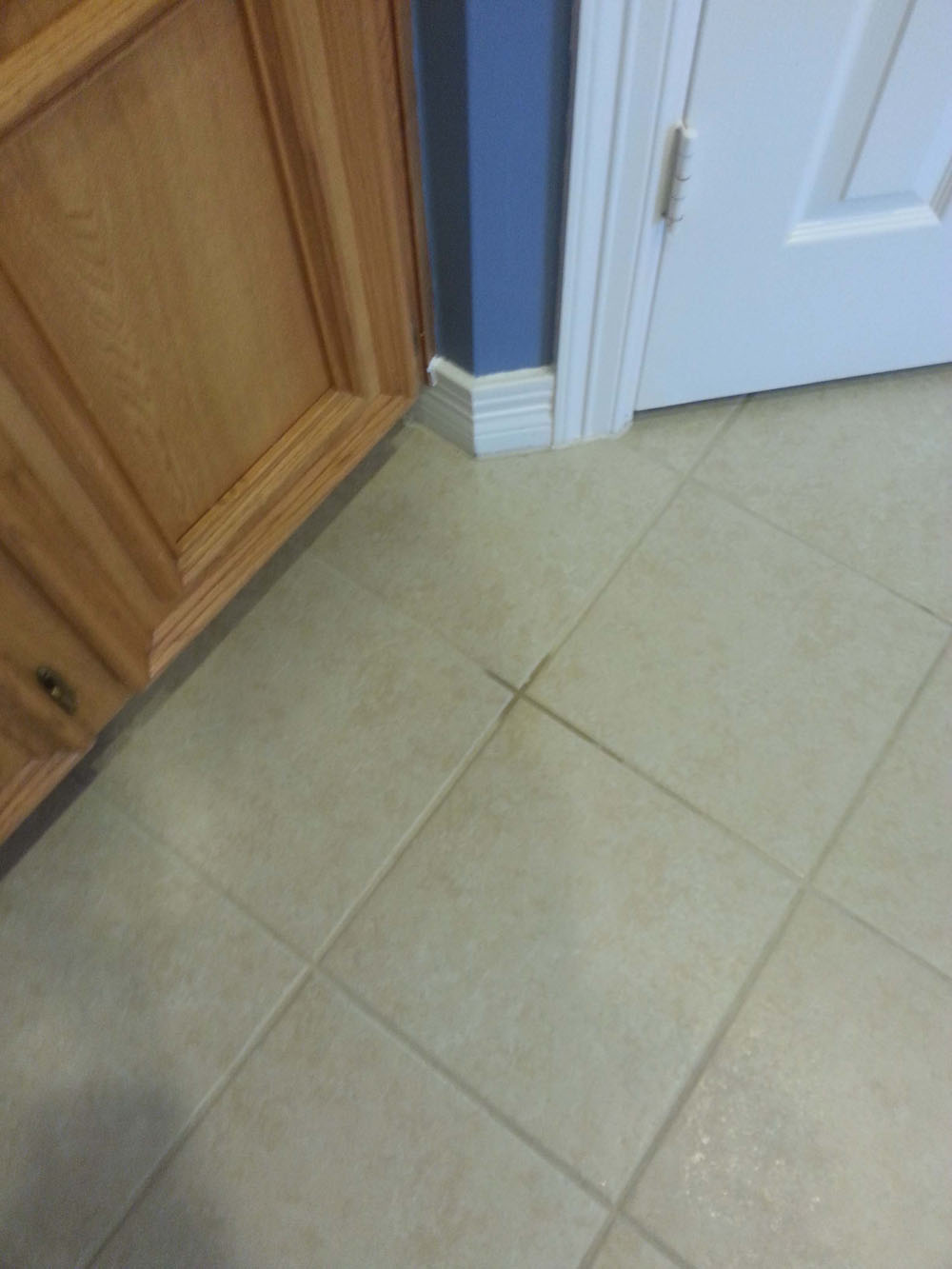That is a great question!
Maybe you’ve just put in a new tile floor, perhaps you’re getting ready to move into your new home or maybe you are getting ready to have your floor professionally cleaned. Of course you want to protect your investment, but you’ve been told the grout doesn’t need be sealed (usually by the builder or installer). Or maybe you remember sealing your grout but the grout still got dirty so why invest in sealing this time?

- Grout being sealed
Before we get into the details of what sealant is and how it works, let’s determine if your grout needs to be sealed. Here’s a quick test you can perform to determine whether or not your grout needs to be sealed. Take a tablespoon of clean water and pour it into a grout line. If the grout darkens the grout is absorbing the water. Grout is like a hard sponge and it will absorb liquids until it is saturated. Since we put down clean water, as soon as the grout dries it will return to the original color. So if your grout darkened quickly when it got wet, the grout should be sealed. This is particularly true if there is any chance stainable liquids could be spilled on your floor!
Let’s talk about what happens if the spill isn’t a clear liquid. If the spill was red wine, kool-aid, coffee, tea, dirty mop water or any other dark liquid, the grout will not return to the original color of the grout. During a spill, the absorption into the grout will continue until the liquid is gone. The liquid (and its’ stainable properties) are not just on the surface of the grout, the stain is evenly distributed throughout the grout. Yikes! It is impossible to clean the stain out of the grout at this point. We can usually lighten the stain but it can’t be removed by cleaning.
Grout sealant was developed to help prevent these stains. Here is a little information about what sealant is and how it works. For this article, when I mention sealant, I’m speaking of the traditional and most common type of grout sealant. This type of sealant is called a penetrating sealant or sometimes you might see it called an impregnating sealant. This sealant is intended for grout and natural stones, but I’m focusing on sealing grout for this article. The sealant is made of a carrier that will usually be either water or solvent. Now this might be an over simplification, but basically, the carrier has different types of particles dissolved in it. The sealant is basically a liquid with tiny particles in it. These tiny particles get down into all the pores of the grout and they “plug up” the gaps. These particles slow the absorption of liquids – notice I didn’t write “stops absorption” (more on this below). There are many manufacturers of sealant and each manufacturer has several different products to choose from. The latest technology products are usually going to be the most expensive.
Now you might thinking, “what you say makes sense, but I sealed my grout when it was installed and it looks terrible now”. How can that be possible?
It is a common misconception that a grout sealant will keep your grout clean. Sealants don’t repel dirt and debris. They are, however, engineered to repel liquids. If I could manufacture a sealant that would repel dirt, well let’s just say I wouldn’t be here typing this! Grout sealants do repel liquids. The sealant allows you time to get the spill cleaned up. Earlier in this article, I mentioned that the sealant “slows” (NOT “stops”) the absorption of liquids. The sealant isn’t a coating that goes on the grout. This means if a liquid sits on the grout for long enough, the liquid will start absorbing into the grout. When might this happen? Here are some of the common reasons stains occur on sealed floors: pet “accidents”, spills, and wet mopping. In each of these cases, if the liquid sits on the grout long enough, they will make it through the sealant.
How long can liquids sit on the grout before they start absorbing? This depends on several things. First of all, not all sealants are created equal. Also, not all grouts are created equal (the denser the grout the slower the absorption). This means one application of sealant may give someone 3 minutes before it begins to absorb but that same sealant only gives another person 1 minute. The way a floor is cleaned also has an effect. Steam cleaners and harsh chemicals will break down the sealant more quickly. The sealant will wear down over time, and even direct sunlight can speed the breakdown of the sealant. The best thing you can do is not wet mop. You should also do the water absorption test once a year. Every time you have your floor professionally cleaned you should have it re-sealed.
I hope this article helped you understand what grout sealant is and what it isn’t.





